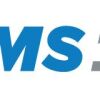The White House “Stop the bleed” campaign encourages bystanders to act immediately in the event of a bleeding emergency before professional help arrives. There are numerous hemorrhage control, or bleeding control products, on the market for teachers, clergy, business owners, private security officers, hunters, outdoor enthusiasts and parents.
Those products include a single tourniquet for self- or buddy-care, as well as multiple tourniquet options in boxes, bags or cabinets for public locations. We’ve compiled a list of products that can be used for incidents with a single patient to dozens of casualties:
#1 SWAT-T Tourniquet
The SWAT-T Tourniquet is great for one-time use. This product is well-suited to bystanders who have little to no prior training but can help to prevent death by extremity bleeding. Don’t be fooled though by its ease of use. The SWAT-T can be easily stowed in a BDU pocket or belt pouch by cops and professional rescuers.
#2 Rescuer Trauma Kit
There are a number of kits on the market for self-care or buddy care. The essentials in a well-stocked kit should include items like:
- A tourniquet
- Gauze roll
- Emergency trauma dressing
- Gloves
- Trauma shears
- Bleeding control patch
For an on-duty first responder, try a kit that can be worn on a duty belt or can be attached to a plate carrier or pack. This particular kit, by North American Rescue, runs for $64.99.
#3 Multi-Casualty Bleeding Control Pack
To prepare for active shooter response, public locations like schools, malls, theaters, churches and concert venues, should be equipped with a multi-casualty bleeding control pack. The contents in a bleeding control pack will vary based on the users level of training, the potential need for the tools and budget. For example, BoundTree offers kits to suit skill levels from basic to advanced.
#4 Tourniquet Application Trainer
The TrueClot Tourniquet Application Trainer tests skills and competency for handling a severe extremity wound. The device pumps “training blood” which simulates hemorrhaging. A tourniquet needs to be properly applied to stop the bleeding.
#5 First Aid Cabinet
In high traffic locations like commuter stations, large retail stores and more, a first aid cabinet should be placed near an AED. First aid cabinets should include items like:
- Trauma pads
- Bandages
- Burn dressings
- Eye wash
- Ointment
- Antiseptic
- Tourniquets
With them, bystanders can easily take action in the event of an emergency.
#6 Bleeding Control Course
By promoting bleeding control courses, we can empower bystanders to take action as initial responders in the event of an emergency. Bleedingcontrol.Org, powered by Stop the Bleed, provides a resource for your community to learn the basics of bleeding control. It’s easy to locate courses in your city. Some classes are free while others cost up to $55.








